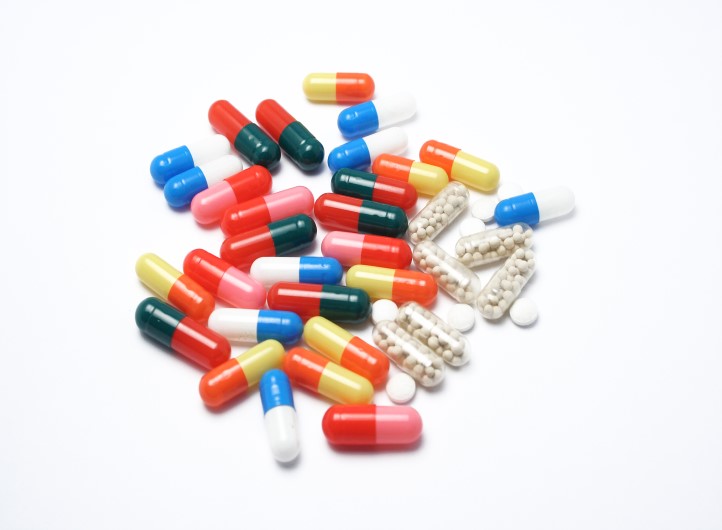According to the World Health Organization (WHO), antibiotic resistance has reached “dangerously high” levels on a global scale. You’re probably familiar with the term “antibiotic resistance” – but what does it actually mean and how serious is it?
In honor of Antibiotic Awareness Week we explore antibiotic resistance, its health and economic implications, as well as what travellers can do to prevent one of the greatest global health challenges we face today.
What is antibiotic resistance and what is the scope of the problem?
Antibiotics are widely used to treat and prevent bacterial infections, but over time, bacteria can develop resistance; most are killed off by the antimicrobial agent, but naturally resistant microorganisms survive and multiply into stronger strains. When antibiotics are overused or improperly used, these ‘survivor’ bacteria and their subsequent stronger generations evolve to make the medication less effective or completely ineffective. Bacteria can also transfer their drug-resistance to other bacteria making it more difficult to control the spread of superbugs.
The ‘Golden Age’ for antibiotic production occurred during the 1940’s and 1960’s. During this time, numerous classes of antibiotics were developed such as penicillins, cephalosporins, fluoroquinolones, and tetracyclines bringing unprecedented advances in medical care. However, in the last 30 years, the market has slowed down significantly due to pharmaceutical companies, academia, and governments disinvesting from antibiotic research and development. The resulting lack of new medicines means that there is a serious lag in our ability to keep up with growing antibiotic resistance.
There are many factors that contribute to increasing antibiotic resistance around the world, including overprescribing (to treat minor infections); misuse (to treat viral infections); self-medication (availability of antibiotics without a prescription); improper treatment regimens (overly long use); fake or substandard antibiotics (containing too little or no active antimicrobial agent); poor infection and prevention control practices in healthcare settings; overuse of antibiotics in veterinary practices and factory farming; and consuming meat products from animals that were given feed-added antibiotics. As a result, our ability to treat infections – from the most common to complex ailments – is at risk.
We are now in the era of superbugs where bacteria are becoming resistant to multiple or all available antibiotics. For example, MRSA (methicillin-resistant Staphylococcus aureus) is typically acquired in hospitals worldwide and can be passed through animal-to-human interactions in farm settings. Fortunately, there are still some antibiotics that respond to MRSA. On the other hand, drug-resistant gonorrhea, Carbapenem-resistant Enterobacteriaceae (CRE) and C. difficile are considered urgent threats since these infections are forcing doctors to prescribe more toxic or less effective treatments.
Antibiotic resistance leads to longer hospital stays, higher medical costs, and increased mortality. A report published by the Council of Canadian Academies (CCA) suggests that 14 people die every day in Canada as a result of antibiotic-resistant infections, and by 2050, that number could double. The Centre for Disease Control and Prevention (CDC) estimates that every year, there are 2.8 million antibiotic resistant infections in the USA. Globally, some experts suggest that 10 million people could die every year by 2050 if measures are not taken to curb antibiotic resistance.
Not only is antibiotic resistance a severe financial burden on healthcare systems – in Canada the cost for hospitals could reach CAD $120 billion by 2050 – it has a negative impact on a country’s economy.
The effects will be felt across all industries as employees will be forced to take extended periods of time off to recover, care for sick family members, and pay for care to deal with infections that are no longer easily treatable. This can have a devastating outcome for those living in poverty or who have precarious employment. The service sector, including the travel industry, where personal interaction is a significant aspect of doing business, will be the most affected since large-scale infections tend to change human behavior and interaction (as seen in the 2003 SARS outbreak).
Antibiotic resistance and travel health
Antibiotics have been instrumental in the advancement and development of essential healthcare procedures and treatments. However, as antibiotic resistance grows, progress is jeopardized. This means that surgeries typically considered safe and routine could become high-risk procedures. Minor infections such as strep throat or ear infections, that at one time were considered to be potentially life-threatening ailments, could once again regain that status.
Antibiotic resistance is also intricately linked to travel health and has many implications for travellers. Overuse of antibiotic medications for ailments such as traveller’s diarrhea has contributed to the spread of antibiotic resistance. In Southeast Asia, for example, ciprofloxacin and other fluoroquinolone antibiotics are no longer effective in treating traveller’s diarrhea since they are resistant to Campylobacter, Escherichia coli, Salmonella, and Shigella bacteria.
In Pakistan, extensively drug-resistant Typhoid Fever is growing since antibiotics such as ampicillin and ciprofloxacin no longer work. Cases have been reported in returning travellers from North America, the UK, Denmark and Australia. Travellers can be at the forefront of antimicrobial resistance – we are sentinels that can provide clues or alert researchers to developments on the ground.
What travellers can do
As travellers, we can prevent the spread of antibiotic resistance. Here are some quick tips:
- Do not take antibiotics to prevent an infection such as traveller’s diarrhea.
- Do not use an antibiotic to treat a viral infection (antibiotics only kill bacteria, not viruses).
- Do not buy over-the-counter antibiotics without discussing first with a licensed doctor.
- Take the antibiotic as directed – do not reduce or stop taking the antibiotic unless otherwise advised by a healthcare professional.
- Only take antibiotics if they were prescribed to you; do not share or take leftover antibiotics.
- Antibiotics are one of the most common counterfeit medications. Only purchase medication from a reliable pharmacy. Do not purchase antibiotics from markets, stalls, unlicensed pharmacies, or online stores. For more information, check out our guide to Travelling with Medications.
Article by Jacqueline Tucci
Image by Danny de Bruyne via Free Images



